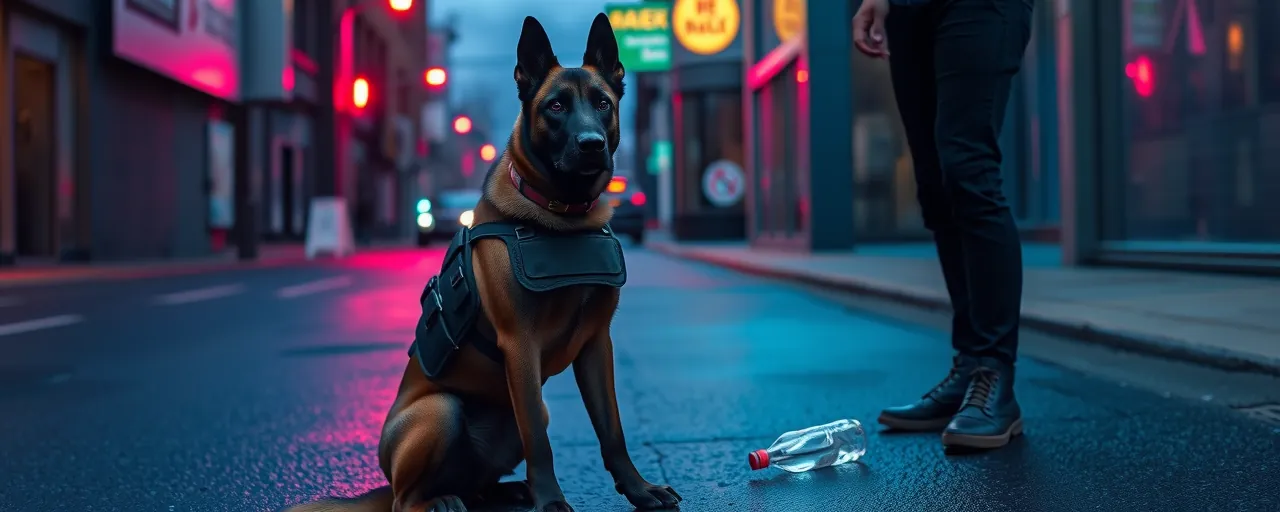A Fierce Stand Against Fentanyl
Fentanyl has turned California’s streets into battlegrounds. This lethal drug fuels addiction, crime, and heartbreak, claiming lives daily. Yet, hope has arrived. Six highly trained canine officers now serve with the California Highway Patrol, ready to confront this crisis head-on. These dogs, partnered with skilled handlers, bring precision and courage to a fight that demands both.
The state’s decision to deploy these K-9 teams marks a turning point. For years, lenient policies have tied law enforcement’s hands, leaving communities vulnerable. Now, five Belgian Malinois and one German Shepherd, the first ever trained from the start to detect fentanyl, signal a commitment to action. Their mission is clear: stop the poison tearing through our neighborhoods.
Why is this urgent? Fentanyl’s toll is staggering. In 2024, CHP K-9 units seized 823 pounds of it, keeping countless doses from reaching users. These new teams, with 240 to 600 hours of specialized training, build on that success. They target narcotics, explosives, and suspects, delivering safety to families desperate for relief.
Some argue these K-9s overstep, raising concerns about privacy or bias. Such critiques, often voiced by those favoring softer approaches, crumble under scrutiny. When fentanyl kills without prejudice, hesitation is not an option. These dogs are not threats; they are guardians, protecting Californians from a relentless enemy.
This fight transcends politics. It’s about ensuring neighborhoods are safe havens, not danger zones. With handlers from regions like Coastal and Inland, these teams embody a statewide resolve to reclaim order and hope.
Trained for Triumph
These K-9s are elite operatives. Certified under California’s rigorous POST standards, they endure intensive training—440 hours for patrol and narcotics, 600 for explosives. Fentanyl detection, now a core focus, equips them to tackle the opioid crisis directly. This precision sets them apart in a battle where every second counts.
Nationally, the fight against fentanyl is gaining ground. Under President Trump’s border security initiatives, federal agencies have seized unprecedented amounts of the drug. California’s K-9s, trained with DHS’s advanced odor imprinting and protected by Kevlar vests, align with this strategy. Weekly drills and GPS collars ensure they perform flawlessly in the field.
Critics, often those skeptical of law enforcement, cite studies showing K-9 false-positive rates above 50 percent in some cases. Yet, these concerns are outdated. Modern double-blind training, adopted in states like Virginia and Florida, sharpens accuracy. California’s teams, led by experienced handlers, are designed to deliver results, not errors.
Consider the alternative: inaction. From 2023 to 2024, national overdose deaths fell 24 percent, driven by aggressive interdiction and naloxone access. California’s K-9s strengthen this progress, targeting cartel smuggling while officers and clinicians address overdoses. Why undermine a strategy that works?
Some policymakers advocate diverting police funds to harm reduction, like syringe exchanges. While treatment has a role, it cannot replace enforcement. Drugs must be stopped at the source, and K-9s excel at that task. Their work complements naloxone programs and overdose mapping, creating a balanced defense.
This approach is practical, not ideological. By pairing law enforcement with public health, California can save lives and disrupt trafficking networks. These K-9s are a critical piece of that strategy, proving strength and compassion can coexist.
Building a Safer Tomorrow
Envision a California where families thrive, unthreatened by drugs or crime. These K-9 teams make that vision possible. Stationed across Valley, Border, and Golden Gate divisions, they symbolize a state refusing to surrender. Their presence declares that safety is non-negotiable.
Federal efforts reinforce this commitment. A $68.8 billion border security package funds K-9 units, border barriers, and more CBP personnel. Operations like Plaza Spike and agreements with Mexico have weakened cartels. California’s K-9s extend this fight, bringing local muscle to a global problem.
Doubters may claim K-9s infringe on rights. But what’s the true cost of doing nothing? Fentanyl spares no one. These teams, equipped with body cams and trained ethically, balance security with accountability. They’re not the problem—they’re the solution.
California has a chance to set a national example. By investing in K-9 units, the state can show how to confront crises with resolve. These dogs and their handlers are not just fighting fentanyl; they’re fighting for a future where communities flourish. Let’s stand with them.
